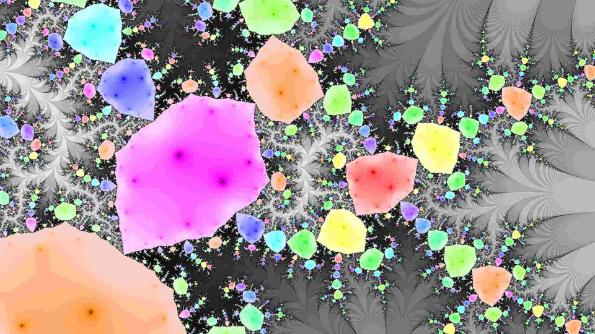The LMS Scheme 3 Holomorphic Dynamics network consists of research groups at Imperial College London, the University of Nottingham, The Open University, and the University of Liverpool. The coordinator of the network is Dr Daniel Nicks from the University of Nottingham. This meeting is organised by Dr David Martí-Pete and Prof. Lasse Rempe.
This will be a hybrid meeting, and it will be possible to attend the meeting online (via Zoom). If you would like to attend the meeting (either in person or online), please contact David. There is a limited amount of funding to support the travel expenses of PhD students and early-career researchers from the universities in the network (Imperial College London, The Open University and University of Nottingham).

Schedule
The schedule of this meeting will be the following:
12:00 - 13:00 lunch at the Victoria Gallery Museum
13:15 - 14:15 Phil Rippon (The Open University)
14:20 - 14:50 Leon Staresinic (Imperial College London)
15:50 - 15:20 coffee break
15:20 - 15:50 Nikolai Prochorov (Université d'Aix-Marseille)
15:55 - 16:25 James Waterman (Stony Brook University)
16:30 - 17:30 Polina Vytnova (University of Surrey)
The talks will take place at room MATH-027 of the Mathematical Sciences Building, indicated by number 206 on the campus map. If you plan to come by car, please read the information about the on-campus visitor car parking.
Abstracts and slides
Phil Rippon (The Open University)
On forward compositions of inner functions
Abstract: In a recent paper we gave sharp results about the behaviour of the boundary extensions of forward compositions of inner functions, in relation to shrinking targets and recurrence, inspired by results about iteration of inner functions. In this talk, we discuss an alternative approach to these problems, obtained by generalising results of Pommerenke on forward compositions of inner functions. (This is joint work with Anna Miriam Benini, Vasso Evdoridou, Núria Fagella and Gwyneth Stallard.)
Download the slides: 2024 LMS Scheme 3 Holomorphic Dynamics - Phil Rippon
Leon Staresinic (Imperial College London)
Density of Stable Interval Translation Maps
Abstract: Interval Translations Maps (ITM’s) are a natural generalisation of the well-known Interval Exchange Transformations (IET’s). They are obtained by dropping the bijectivity assumption for IET’s.
There are two basic types of ITM’s, finite-type and infinite-type ones. They are classified by their non-wandering sets: it is a finite union of intervals for finite-type maps and a Cantor set for infinite-type maps.
One of the basic questions in the field is: How prevalent is each type of map in the parameter space?
In this work, we show that the set of stable finite-type maps forms an open and dense subset in the parameter space of ITM’s with a fixed number of intervals.
This is joint work with Sebastian van Strien and Kostya Drach.
Download the slides: 2024 LMS Scheme 3 Holomorphic Dynamics - Leon Staresinic
Nikolai Prochorov (Université d'Aix-Marseille)
Towards Transcendental Thurston Theory
Abstract: In the 1980’s, William Thurston obtained his celebrated characterization of post-critically finite rational maps. This result laid the foundation of such a field as Thurston's theory in holomorphic dynamics, which has been actively developing in the last few decades. One of the most important problems in this area is the characterization question, which asks whether a given topological map is equivalent to a holomorphic one. The result of W. Thurston and further developments allow us to answer this question quite effectively in the setting of (postcritically finite) maps of finite degree, and it has numerous applications for the dynamics of rational maps.
A similar question can be formulated for the maps of infinite degrees (i.e., in the transcendental setting), for instance, for entire postsingularly finite maps. However, the characterization problem becomes significantly more complicated, and the complete answer in the transcendental case is still not known.
In my talk, I am going to motivate the questions above and introduce the key notions of Thurston's theory in the transcendental setting. I report new results in this direction and support them with concrete examples. Finally, if time permits I will explain the main techniques that are used to attack the characterization problem.
Download the slides: 2024 LMS Scheme 3 Holomorphic Dynamics - Nikolai Prochorov
James Waterman (Stony Brook University)
Wandering everywhere around the Julia set
Abstract: We discuss the existence of a transcendental entire function with a wandering domain whose limit set is the whole Julia set, the largest possible set that a wandering domain can accumulate on. Joint work with David Martí-Pete and Lasse Rempe.
Polina Vytnova (University of Surrey)
Estimating the spectral radius of the transfer operator for an infinite IFS
Abstract: A popular approach to Hausdorff dimension of limit sets relies on the Ruelle-Bowen formula, that connects the Hausdorff dimension to the spectral radius of a suitable nuclear operator. The spectral radius can then be approached via the dynamical zeta function or via the finite rank approximations. We will discuss functional analysis behind the latter in the setting of infinite hyperbolic iterated function systems arising from analytic families. Based on joint work with C. Wormell.
Recordings
Back to: Department of Mathematical Sciences